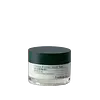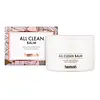What's inside
What's inside
 Key Ingredients
Key Ingredients

 Benefits
Benefits

 Concerns
Concerns

 Ingredients Side-by-side
Ingredients Side-by-side

Water
Skin ConditioningPropanediol
SolventSqualane
EmollientCetearyl Alcohol
EmollientPanthenol
Skin ConditioningGlycerin
HumectantBetaine
HumectantTrehalose
HumectantPolyglyceryl-2 Stearate
EmulsifyingGlyceryl Stearate
EmollientAmmonium Acryloyldimethyltaurate/Beheneth-25 Methacrylate Crosspolymer
Emulsion StabilisingCetearyl Glucoside
EmulsifyingButylene Glycol
HumectantStearyl Alcohol
EmollientSodium Polyacryloyldimethyl Taurate
Emulsion StabilisingCaprylyl Glycol
EmollientSorbitan Olivate
EmulsifyingStearic Acid
CleansingHydroxyacetophenone
AntioxidantPentylene Glycol
Skin ConditioningHydrogenated Polydecene
EmollientButyrospermum Parkii Butter
Skin ConditioningHelianthus Annuus Seed Oil
EmollientPalmitic Acid
EmollientDipropylene Glycol
HumectantEthylhexylglycerin
Skin ConditioningTrideceth-10
CleansingDisodium EDTA
1,2-Hexanediol
Skin ConditioningPolyglyceryl-10 Myristate
Skin ConditioningArachidic Acid
CleansingSodium Hyaluronate
HumectantTocopherol
AntioxidantMyristic Acid
CleansingOleic Acid
EmollientCetyl Ethylhexanoate
EmollientEthylhexyl Palmitate
EmollientCaprylic/Capric Triglyceride
MaskingAcetyl Hexapeptide-8
HumectantCentella Asiatica Extract
CleansingLonicera Japonica Flower Extract
Skin ConditioningHydroxypropyltrimonium Hyaluronate
Hydrolyzed Hyaluronic Acid
HumectantCamellia Japonica Flower Extract
EmollientSalvia Officinalis Leaf Extract
CleansingMelaleuca Alternifolia Leaf Extract
PerfumingSodium Hyaluronate Crosspolymer
HumectantPalmitoyl Tripeptide-5
Skin ConditioningSodium Acetylated Hyaluronate
HumectantWater, Propanediol, Squalane, Cetearyl Alcohol, Panthenol, Glycerin, Betaine, Trehalose, Polyglyceryl-2 Stearate, Glyceryl Stearate, Ammonium Acryloyldimethyltaurate/Beheneth-25 Methacrylate Crosspolymer, Cetearyl Glucoside, Butylene Glycol, Stearyl Alcohol, Sodium Polyacryloyldimethyl Taurate, Caprylyl Glycol, Sorbitan Olivate, Stearic Acid, Hydroxyacetophenone, Pentylene Glycol, Hydrogenated Polydecene, Butyrospermum Parkii Butter, Helianthus Annuus Seed Oil, Palmitic Acid, Dipropylene Glycol, Ethylhexylglycerin, Trideceth-10, Disodium EDTA, 1,2-Hexanediol, Polyglyceryl-10 Myristate, Arachidic Acid, Sodium Hyaluronate, Tocopherol, Myristic Acid, Oleic Acid, Cetyl Ethylhexanoate, Ethylhexyl Palmitate, Caprylic/Capric Triglyceride, Acetyl Hexapeptide-8, Centella Asiatica Extract, Lonicera Japonica Flower Extract, Hydroxypropyltrimonium Hyaluronate, Hydrolyzed Hyaluronic Acid, Camellia Japonica Flower Extract, Salvia Officinalis Leaf Extract, Melaleuca Alternifolia Leaf Extract, Sodium Hyaluronate Crosspolymer, Palmitoyl Tripeptide-5, Sodium Acetylated Hyaluronate
Ethylhexyl Palmitate
EmollientCetyl Ethylhexanoate
EmollientPEG-20 Glyceryl Triisostearate
EmollientPolyethylene
AbrasivePEG-8 Isostearate
Emulsifying1,2-Hexanediol
Skin ConditioningButyrospermum Parkii Butter
Skin ConditioningTocopheryl Acetate
AntioxidantCitrus Aurantium Dulcis Peel Oil
MaskingLavandula Angustifolia Oil
MaskingPelargonium Graveolens Flower Oil
MaskingAmyris Balsamifera Bark Oil
MaskingEucalyptus Globulus Leaf Oil
PerfumingMelaleuca Alternifolia Leaf Oil
AntioxidantCitrus Paradisi Peel Oil
MaskingCitrus Aurantium Bergamia Fruit Oil
MaskingBoswellia Carterii Oil
MaskingJuniperus Mexicana Oil
MaskingWater
Skin ConditioningCocos Nucifera Fruit Extract
EmollientButylene Glycol
HumectantCitrus Aurantifolia Fruit Extract
Skin ConditioningCitric Acid
BufferingPhenoxyethanol
PreservativeNelumbium Speciosum Flower Extract
Skin ConditioningFreesia Refracta Extract
Skin ConditioningRose Extract
Skin ConditioningLeontopodium Alpinum Extract
Skin ConditioningJasminum Officinale Extract
MaskingNarcissus Pseudo-Narcissus Flower Extract
Skin ConditioningLilium Tigrinum Extract
Skin ConditioningIris Versicolor Extract
EmollientEthylhexylglycerin
Skin ConditioningLimonene
PerfumingCitral
PerfumingLinalool
PerfumingEthylhexyl Palmitate, Cetyl Ethylhexanoate, PEG-20 Glyceryl Triisostearate, Polyethylene, PEG-8 Isostearate, 1,2-Hexanediol, Butyrospermum Parkii Butter, Tocopheryl Acetate, Citrus Aurantium Dulcis Peel Oil, Lavandula Angustifolia Oil, Pelargonium Graveolens Flower Oil, Amyris Balsamifera Bark Oil, Eucalyptus Globulus Leaf Oil, Melaleuca Alternifolia Leaf Oil, Citrus Paradisi Peel Oil, Citrus Aurantium Bergamia Fruit Oil, Boswellia Carterii Oil, Juniperus Mexicana Oil, Water, Cocos Nucifera Fruit Extract, Butylene Glycol, Citrus Aurantifolia Fruit Extract, Citric Acid, Phenoxyethanol, Nelumbium Speciosum Flower Extract, Freesia Refracta Extract, Rose Extract, Leontopodium Alpinum Extract, Jasminum Officinale Extract, Narcissus Pseudo-Narcissus Flower Extract, Lilium Tigrinum Extract, Iris Versicolor Extract, Ethylhexylglycerin, Limonene, Citral, Linalool
 Reviews
Reviews

Ingredients Explained
These ingredients are found in both products.
Ingredients higher up in an ingredient list are typically present in a larger amount.
1,2-Hexanediol is a synthetic liquid and another multi-functional powerhouse.
It is a:
- Humectant, drawing moisture into the skin
- Emollient, helping to soften skin
- Solvent, dispersing and stabilizing formulas
- Preservative booster, enhancing the antimicrobial activity of other preservatives
Butylene Glycol (or BG) is used within cosmetic products for a few different reasons:
Overall, Butylene Glycol is a safe and well-rounded ingredient that works well with other ingredients.
Though this ingredient works well with most skin types, some people with sensitive skin may experience a reaction such as allergic rashes, closed comedones, or itchiness.
Learn more about Butylene GlycolThis ingredient is also known as shea butter. It is an effective skin hydrator and emollient.
Emollients help soothe and soften your skin. It does this by creating a protective film on your skin. This barrier helps trap moisture and keeps your skin hydrated. Emollients may be effective at treating dry or itchy skin.
Shea butter is rich in antioxidants. Antioxidants help fight free-radicals, or molecules that may harm the body. It is also full of fatty acids including stearic acid and linoleic acid. These acids help replenish the skin and keep skin moisturized.
While Shea Butter has an SPF rating of about 3-4, it is not a sunscreen replacement.
Shea butter may not be fungal acne safe. We recommend speaking with a professional if you have any concerns.
Learn more about Butyrospermum Parkii ButterCetyl Ethylhexanoate is an emollient ester. It comes from cetearyl alcohol and 2-ethylhexanoic acid.
Cetyl Ethylhexanoate is an emollient that adds a velvety feel to skin without being greasy or oily. Emollients help trap moisture into your skin, keeping your skin soft and hydrated.
Ethylhexyl Palmitate, also known as octyl palmitate, is created from 2-ethylhexyl alcohol and palmitic acid. It is a fatty acid ester.
The fatty acid content of Ethylhexyl Palmitate makes it an emollient. Emollients help soften and hydrate your skin by trapping moisture within.
Ethylhexyl Palmitate is also used to help improve the texture of cosmetics. It helps other ingredient dissolve in products and help disperse ingredients more evenly.
You'll likely find this ingredient in sunscreen, as it is often used to mix UV-blocking ingredients such as avobenzone and ethylhexyl triazone.
It can also help stabilize the fragrances in a product as a fragrance fixative.
Ethylhexyl Palmitate can be used to substitute mineral oil.
Due to its high fatty acid content, it may not be fungal-acne safe.
Learn more about Ethylhexyl PalmitateEthylhexylglycerin (we can't pronounce this either) is commonly used as a preservative and skin softener. It is derived from glyceryl.
You might see Ethylhexylglycerin often paired with other preservatives such as phenoxyethanol. Ethylhexylglycerin has been found to increase the effectiveness of these other preservatives.
Water. It's the most common cosmetic ingredient of all. You'll usually see it at the top of ingredient lists, meaning that it makes up the largest part of the product.
So why is it so popular? Water most often acts as a solvent - this means that it helps dissolve other ingredients into the formulation.
You'll also recognize water as that liquid we all need to stay alive. If you see this, drink a glass of water. Stay hydrated!
Learn more about Water